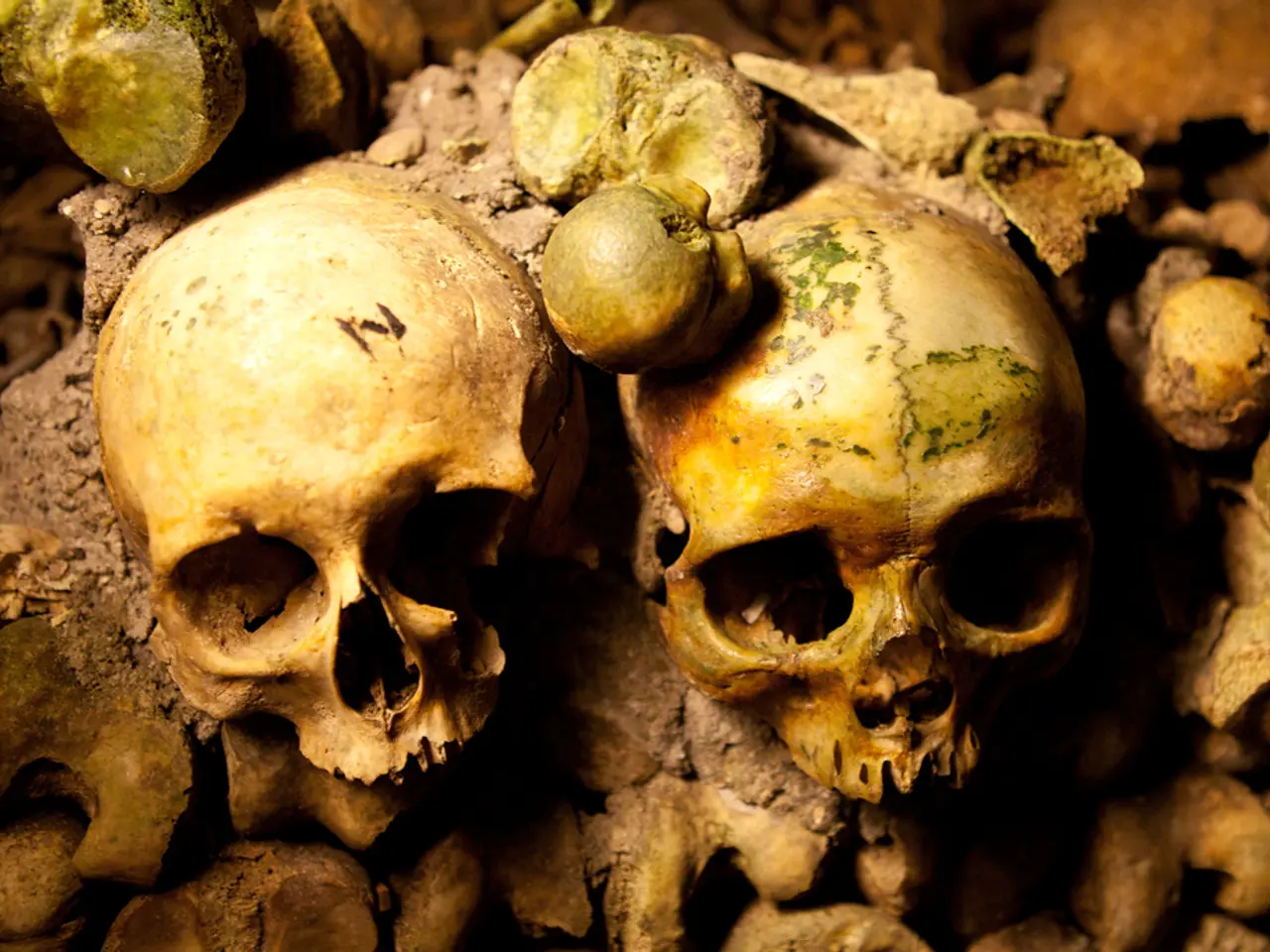Discovered Skull Determined to be Denisovan Remnant, Furthering Knowledge of Ancient Humans
In a groundbreaking study published in the Proceedings of the National Academy of Sciences, researchers have made significant strides in identifying and classifying Denisovan hominins, ancient human relatives who have long been elusive due to a lack of sufficient remains.
The study, which has garnered international attention, has provided new insights into the Denisovans' physical characteristics and their place in the human evolutionary tree. By examining patterns of gene regulation within the Denisovan genome, the authors were able to identify 32 physical traits of the Denisovan hominin.
One of the most intriguing findings of the study is the identification of Kabwe 1, a fossil discovered in Africa, which shows a high similarity to the Denisovan genetic profile. Despite not being a direct Denisovan, this discovery supports the researchers' method of recognising many Middle Pleistocene human remains worldwide as potentially related to the Neanderthal-Denisovan lineage or its root, rather than Denisovans themselves directly.
The study also reclassified the Dragon Man skull, discovered in China in 1933, as Denisovan. This reclassification was based on a comparison of 18 skull features, such as forehead height, head width, size of the jaw socket, and length of the palate, which matched 16 out of 18 with the Denisovan profile.
Another significant discovery was the identification of Dali Man, a skull found in China in the 1970s, as a Denisovan. This skull is generally considered to belong to the species Homo heidelbergensis, but the study authors found that Dali Man was a strong fit for the Denisovan profile, with 15 out of 18 traits well aligned with Denisovan values.
The study also shed light on Broken Hill Man, a skull found in Zambia in 1921. This fossil shows an affinity to both Denisovan and Neanderthal morphologies, suggesting it may be one of the last common ancestors of these two ancient lineages.
Over the past 15 years, bits and pieces of Denisovans have been found across Asia, making it clear that these hominins had a wider geographical distribution than previously thought.
The researchers' method was able to correctly predict more than 85 percent of Neanderthal and chimpanzee physical characteristics using the same technique, demonstrating its accuracy and potential for classifying unknown hominins around the world. The study authors suggest that their approach could help resolve the "Muddle in the Middle", a term used to describe the Middle Pleistocene era, which is marked by the presence of many morphologically ambiguous humans.
This research not only provides valuable insights into our ancient relatives but also opens up new avenues for understanding human evolution and our place in the world. As more fossils are discovered and analysed, we can expect to learn even more about our evolutionary history and the diverse hominin species that once roamed the Earth.
Read also:
- Nightly sweat episodes linked to GERD: Crucial insights explained
- Antitussives: List of Examples, Functions, Adverse Reactions, and Additional Details
- Asthma Diagnosis: Exploring FeNO Tests and Related Treatments
- Unfortunate Financial Disarray for a Family from California After an Expensive Emergency Room Visit with Their Burned Infant








